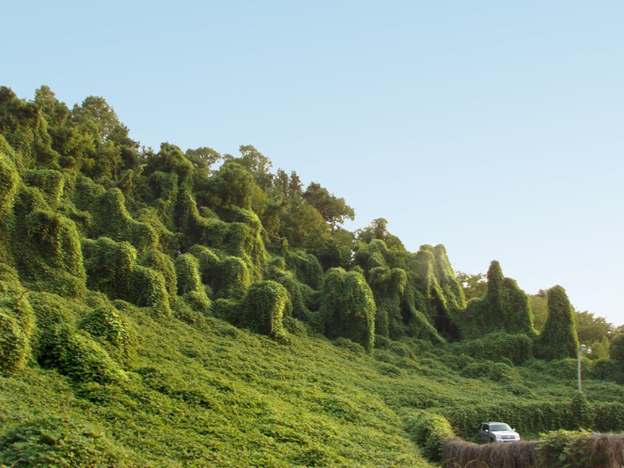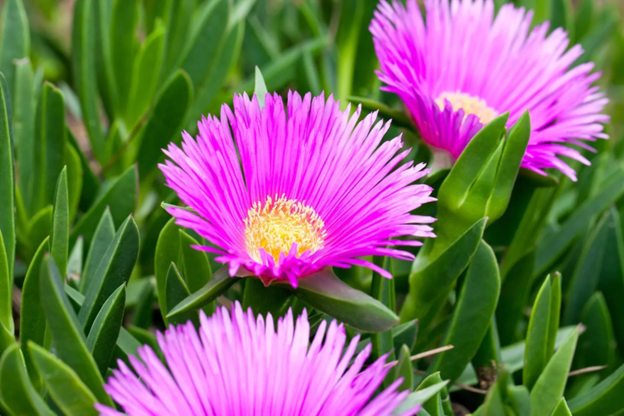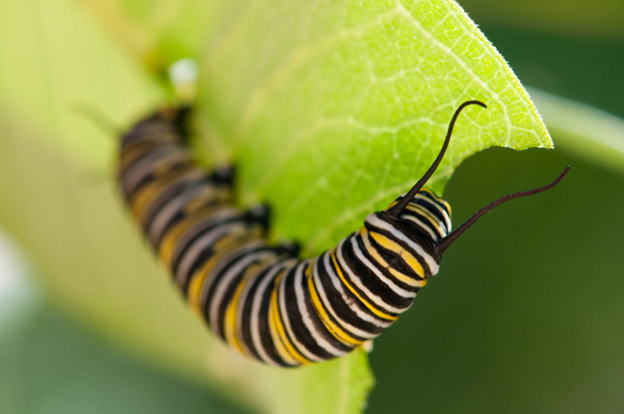When the kudzu plant was first introduced to the United States, it was admired for its sweet-smelling blooms and sturdy vines. The government promoted it as a plant to prevent soil erosion but failed to consider how the kudzu would outcompete all other native species. Neither did they consider how it would consume everything in its wake, reaching out its leafy tendrils and smothering out any other plant life. It quickly spread throughout the south like a fire fueled by relentless wind. The plant was later coined “the vine that ate the South.” The kudzu plant is just one of thousands of invasive species wreaking chaos on ecosystems in the United States.

They have been a hotly contested issue as people have questioned how harmful they truly are to the ecosystems. Invasive species are described as any organism not native to the area that is causing either economic harm, environmental harm, or damage to human health. As people and products are constantly moved around the globe, species will inevitably be introduced into new ecosystems. Invasive species are almost entirely spread by human activity, whether intentional or not. Usually, when an organism is introduced to a new area, it will not survive as it is not acclimated to the climate or lacks access to suitable foods. However, in other cases, the species can thrive due to abundant food resources and limited predators. The ability of invasive species to repopulate unchecked makes them especially problematic. They can then destroy ecosystems by multiplying so frequently that they crowd out native species. This drastically affects surrounding insects that rely on native plants for survival.
In Rodeo Beach, California, before the surge of the invasive ice plants, the surrounding sand dunes were covered in native flora and fauna. This thriving ecosystem supported butterflies, bees, small mammals, and birds. However, a misguided decision to introduce ice plants for erosion control in the early 1900s changed the landscape. Park rangers now survey the dense mats of ice plants that crawl over native life and cover any native vegetation with apprehension. A local resident remarked, “It was disappointing to see how ice plants have completely covered the areas where beautiful native flowers once grew.”Although the ice plants might be visually striking with dark leaves and bright yellow or purple flowers, their impact on ecosystems is anything but lovely.

The dense foliage of ice plants prevents any other vegetation from getting sunlight or necessary nutrients. With fewer native flowers, there were fewer pollinators, which drastically affected the entire ecosystem. The rangers were compelled to take action. They spearheaded weekly events in which volunteers helped to remove ice plants. The most effective way to remove the ice plant is through manual removal. Volunteers worked tirelessly to remove the ice plant by hand. Though, the hard work was not for nothing, as the group cleared patches of ice plants and replaced them with native seeds that allowed the ecosystem to recover. The hillsides transformed. Once vacant of wildlife, bees and butterflies returned to hillsides that now flourished with native plants. This shows how a collective community and ecological awareness can improve an environment. The ice plants at Rodeo Beach provide us with an important lesson: we must carefully consider nature's delicate balance before altering the environment.
A healthy ecosystem consists of plants and animals working harmoniously with the weather and the landscape to create balance. But since every organism within this ecosystem is so interconnected, like a tower of cards, one change can cause everything to come crashing down. In the example of the ice plant, we can see how invasive species can contribute to the decline of insects.
The decline of insects due to invasive species is just the tip of the iceberg of the broader issue of insect loss. Insect loss can be attributed to habitat loss, toxic pesticides, invasive species, etc. The decline in insects is a very complex issue and has some ecologically severe repercussions. Janet Marinelli, a world-renowned scientific journalist, highlights the ecological specialization of insects by stating, “The diet of most insects is restricted to a single plant family, and the closer species are to the tropics, the more constrained their menus are likely to be. More than 90 percent of the insect herbivores in the rainforests of Papua New Guinea, for example, can utilize only plants in a single genus, or a closely related group of species.” Insects' reliance on one species of plants is due to their co-evolution with one another and how the insect adapted to that one specific plant. The insect develops adaptations to use that plant as the preferred food source. When invasive species outcompete the native species, the insects that rely on that plant are heavily impacted. Research shows a strong correlation between the dwindling of native host plants and herbivore insect populations reducing in tandem. Insects also contribute heavily to the success of our crop yields. They play critical roles in pollinating our crops; without them, humans could face severe food shortages. That is why we must minimize harm to our insect populations.

The introduction of the Kudzu plant and the ice plant show the unintended consequences that human actions have on ecosystems. Initially, they were admired for their benefits until they wreaked havoc on ecosystems. We can make collective efforts to remove invasive species. More importantly, we must consider the consequences before introducing species into a new area. Invasive species contribute significantly to the decline of insect populations. If insect populations continue to decline due to the introduction of invasive species, humans could face severe ecological repercussions such as decreased pollination and threats to our food security. As we move forward, it is essential we minimize harm to native species and ecosystems. Just as our decisions have consequences for our native ecosystems, they also have consequences for us.



